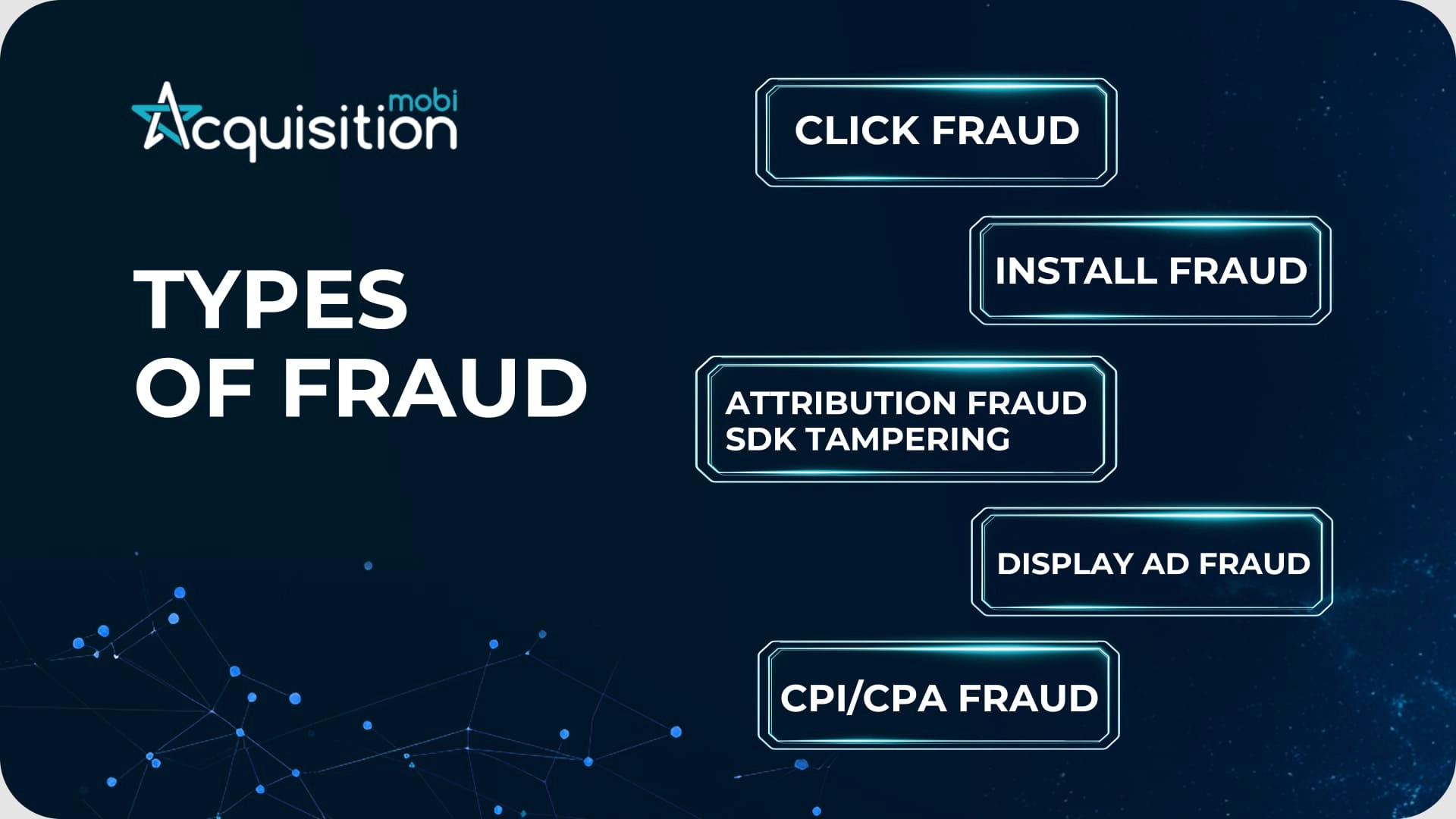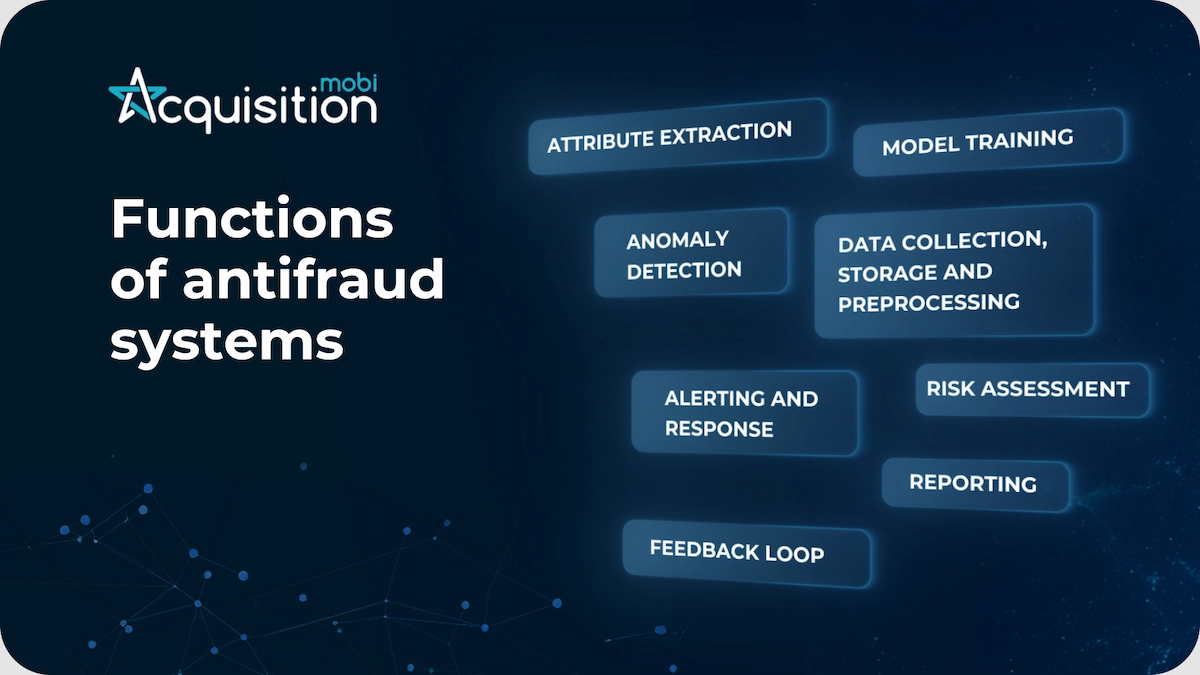Motion graphics have become ubiquitous, appearing in advertising, film, mobile applications, and on websites. They help convey a product or...
- CGI Production
- App Marketing Services
- Blog
- Contacts
- © 2025 ACQUISITION MOBI CYPRUS LTD
12 September, 2024
The mobile marketing industry is facing the problem of rising fraud across various categories. Fraud-related costs will total $170 billion by 2028. How can you protect from fraudulent activity?
The mobile marketing industry is facing the issue of rising fraud across various categories: from gaming to e-commerce. Research from Fraud Broker showed that ad spending associated with fraud amounted to $84 billion in 2023. It could reach $170 billion by 2028. Fraud in the financial sector has increased by 50%. These alarming statistics and the ingenuity of fraudsters pose a crucial question for advertising specialists. How can they protect themselves from fraudulent activity and safeguard their budgets?
Fraud is the intentional manipulation of information related to ad impressions and interactions. Mobile ad fraud affects two channels: the mobile web browser and in-app environments. To recognize fraud, it’s important to understand who’s behind it. Often, fraudsters are dishonest publishers or fake advertising platforms.
Marketing partners drive traffic to mobile apps by placing ads across different platforms. However, fraudsters can manipulate data about user conversions to secure payment. The tools used to achieve this include:
Fraud affects current and future marketing campaigns, leading to negative outcomes.
The growing cost of ad sources and stricter privacy regulations from App stores led to an increase in invalid traffic. Advertisers turned to dubious in-app sources, which are rife with fraud, leading to even greater budget losses.
Common fraud schemes have become easier to recognize. It has led to the development of more complex fraudulent traffic algorithms. So, how can you detect fraud in your campaigns? When analyzing statistics, it’s important to pay attention to the benchmarks.
This metric evaluates the time elapsed from the click to the installation of the mobile app. On average, it takes between 10 to 60 seconds to install an app. If the CTIT is less than 10 seconds, this indicates click injection. If the CTIT exceeds 24 hours, this points to click flooding.
This ratio reflects the proportion of engaged users relative to the total number of clicks. The standard range is 0.1-0.3%. Any deviation from this range may indicate fraud.
This shows the percentage of new devices that have installed the advertised app. While users do change devices, it’s important to monitor the allowable range of NDR—manipulation with device ID resets may suggest device farm activities.
This metric reflects the number of users who return to the app. The norm is that the deviation from organic traffic should not exceed 25%.
This metric accounts for cases where a user didn’t click on the ad to visit the app store, but installed the app shortly after viewing the ad. VTA should comprise no more than 60% of the overall traffic.
These tools analyze incoming traffic in detail. They can detect anomalies, such as misspelled carrier names or user-agent information. Pay attention not only to incorrect operator names but also to their geographic location. For example, if an ad is targeted at the U.S., but the operator is from China, this could signal fraud.
Monitoring multiple installs from the same IP can help avoid artificial metrics. IP duplicates should not exceed 10%.
| Metric | Acceptable Value |
| CTIT | 10 to 60 seconds |
| CTI | 0.1-0.3% |
| Retention Rate | No more than 25% deviation |
| VTA | No more than 60% |
| IP Duplicates | No more than 10% |
Tracking these metrics helps catch anomalies early and act accordingly.
Mobile ad fraud can be divided into five main types. Let’s explore the types marketers and developers should be aware of and how they operate.

This type involves intentional actions to generate imitation clicks. It leads to a drain on the budget in PPC, CPC, or CPI models. Fraudsters increase their revenue using methods such as:
Install fraud generates false information about app installations on user devices. To deceive advertisers who pay per install, fraudsters often use emulators and device farms to manipulate installation data.
Common tactics include:
Mobile attribution tracks events reflecting the user journey before and after installing an app. To exploit attribution data, fraudsters may employ SDK Hacking and SDK Spoofing.
SDK Hacking involves tampering with an app’s software to insert illegal ads. Fraudsters exploit SDK not only to display intrusive ads but also to steal sensitive information, such as device IDs and personal data. To prevent hacking, consider using closed-source code and implementing high-security standards.
SDK Spoofing is a type of fraud that creates seemingly legitimate app installs without any actual downloads. Fraudsters inspect the app’s source code or configuration. Then replace the real SDK with a fake one. This results in fabricated events, leading to false attribution and misleading performance metrics.
Display Ad Fraud involves manipulating ad placement and impressions to generate unauthorized views or clicks.
Key methods include:
CPI (Cost Per Install) and CPA (Cost Per Action) models have created new opportunities for install fraud. Advertisers were charged based on CPI, but fraudsters began generating fake installs using techniques like Click Flooding, Click Injection and Device Farms. The CPA model was meant to offer more protection since users completing actions after installation are typically real. However, fraudsters found ways to falsify in-app actions, leading to CPA fraud, which is more profitable due to higher payouts for completed actions.
Despite the rise of CPA, CPI campaigns remain popular. Statista reports that install fraud cost the European market around $2.5 billion, while the North American market saw losses of approximately $1.2 billion in 2023.
A common question marketers and developers ask is, “Can fraud be detected manually?” While possible, it demands considerable time and resources. Key signs of fraud include:
As fraudsters evolve their tactics, the need for anti-fraud systems has become critical. These systems analyze click, behavioural, and device data to identify suspicious activity.

Anti-fraud systems can be broadly categorized into two types:
Below are some of the widely used anti-fraud systems built into mobile measurement platforms (MMPs).
AppsFlyer’s Protect360 detects and filters fraudulent clicks, installs, and device emulators by analyzing user behaviour patterns and discrepancies. It utilizes a multi-layered approach to prevent fraud effectively.
Adjust’s Fraud Prevention Suite combats fraud at every level. It rejects fake installs in real time, provides callbacks with reasons for blocking, ensures accurate attribution, and conducts reliable analysis.
Singular’s Fraud Prevention Suite uses machine learning to identify various anomalies in ad campaigns. The service offers extensive capabilities for mobile attribution, analytics, and fraud protection.
Ad fraud is a growing problem, causing losses for all parties in the digital ecosystem. Understanding the sorts of fraud and available protection systems will help you identify fraudulent schemes early and protect your ad budget.
At Acquisition.mobi, we work with trusted partners and prioritize protecting our clients’ ad campaigns from fraudulent attacks. If you’re interested in in-app advertising, contact us at info@acquisition.mobi.
Motion graphics have become ubiquitous, appearing in advertising, film, mobile applications, and on websites. They help convey a product or...
UGC is no longer exclusively “user-generated content.” With the rise of artificial intelligence, marketers are facing a new reality: you...